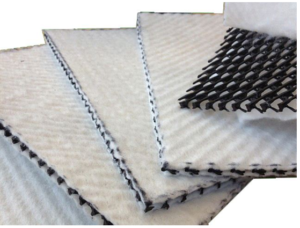Geocomposite
We provide our clients with Geo Composites that are designed using a combination of two or more geosynthetics type materials, such as geotextile-genet, geotextile-geogrid, geonet-geomembrane, or a geosynthetic clay liner (GCL). A plastic drainage core surrounded by geotextile filters is used to form prefabricated geocomposite drains or prefabricated vertical drains (PVDs). In addition to this, we provide customization as per the specification laid down by the customers.
Geocomposites are used in construction and civil engineering applications for drainage applications. Drainage is defined as the collection and transportation of rainwater, groundwater, or other fluids such as leachates and gases. Geocomposite drainage systems are being increasingly used as a more effective and economical alternative to traditional granular-based solutions.
Geocomposites are manufactured by combining the best features of different geotextiles, geonets, or membranes in such a way that specific applications are addressed in the best manner. Our geonet products are used for: erosion control, foundation wall drainage, landfill leachate collection in landfill liners, leak detection, caps and closures, methane gas collection, pond leak detection, roadway, and pavement drainage, and other subsurface drainage system applications.
If you require geocomposite drainage filtration to keep silt and soil particles from clogging the flow or to increase the friction characteristics, GSE offers geocomposites consisting of a geonet heat-bonded with a nonwoven needle-punched geotextile. It is an optimal solution for landfill liner applications. Geocomposites consist of a combination of geotextile and geogrid, or geogrid and geomembrane, or geogrid and geotextile and geomembrane, or any one of these three materials with another material.
Drainage Geocomposite normally consists of a polymer sheet core covered by a geotextile acting as a filter and separator on one or both sides.
Features Of Geocomposites
Geocomposites are used in construction and civil engineering applications for drainage applications. Drainage is defined as the collection and transportation of rainwater, groundwater, or other fluids such as leachates and gases.
Geocomposite drainage systems are being increasingly used as a more effective and economical alternative to traditional granular-based solutions.
Applications Of Geocomposites
Roads, Rail Tracks, and Airfields
Factory and Warehouse Floors
Reinforced soil walls and slopes
Retaining walls, Basement walls
Embankments, slopes
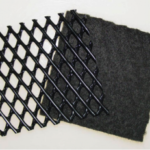

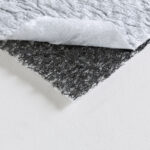

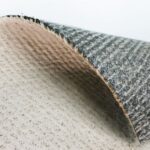

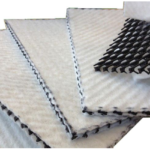

FAQ's
Geocomposite is the generic name that is used to describe geosynthetic products made of the combination of two or more geosynthetic materials such as geotextiles, geogrids, geonets, or geomembrane with another material. They perform a large number of functions that include separation, reinforcement, filtration, drainage, and containment.
Geocomposites perform a large number of functions that include:
– Separation
– Reinforcement
– Filtration
– Drainage
– Containment
– Separation
– Reinforcement
– Filtration
– Drainage
– Containment
– Maintains soil integrity by providing and maintaining a high-volume flow channel for water and gases.
– High-efficiency drainage.
– Reduction in the time taken to install materials.
– Filtration qualities that are suited for most forms of backfill.
– Deliver consistent results.
– Alternative to traditional materials and comparatively cost-effective.
– By substituting bulkier materials with lighter ones, the environmental effect of construction is reduced.
– High-efficiency drainage.
– Reduction in the time taken to install materials.
– Filtration qualities that are suited for most forms of backfill.
– Deliver consistent results.
– Alternative to traditional materials and comparatively cost-effective.
– By substituting bulkier materials with lighter ones, the environmental effect of construction is reduced.
1) The surface on which the geocomposite is going to be placed should be cleaned and free from dirt and debris.
2) The geocomposite must be installed in the direction opposite to the slope and to minimize wrinkles it must be positioned by hand after being unrolled.
3) To prevent the geocomposites from moving from their position during the installation process a sandbag or similar object must be placed over the geocomposites.
4) To prevent pull-out or slippage the rolls must be placed in a trench and rolled from the top to the bottom of the slopes.
2) The geocomposite must be installed in the direction opposite to the slope and to minimize wrinkles it must be positioned by hand after being unrolled.
3) To prevent the geocomposites from moving from their position during the installation process a sandbag or similar object must be placed over the geocomposites.
4) To prevent pull-out or slippage the rolls must be placed in a trench and rolled from the top to the bottom of the slopes.

